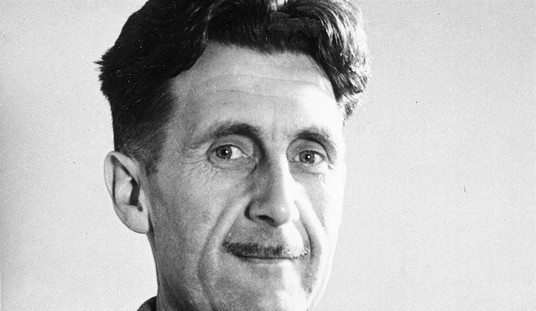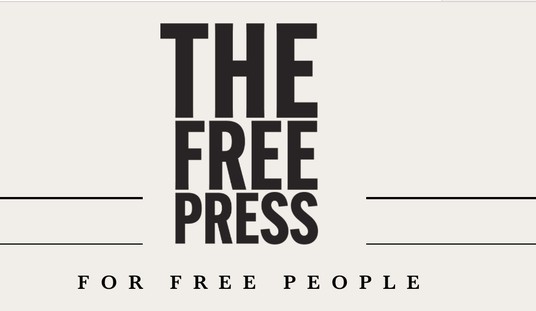If they’re wrong, no one will ever let them live this down. If they’re right, they will turn the polling industry on its head. And whether people factor these polls into their predictions today likely depends on which outcome they prefer.
Trafalgar has consistently used its own methodology to get around the “shy Trump voter” issue, which it used successfully to predict the 2016 election outcome. Last week Trafalgar had polls showing Trump winning key swing states, and told Newsweek yesterday that they see another Trump win in the offing:
One of the few pollsters who accurately predicted that President Donald Trump would win the 2016 presidential election told Newsweek he feels “more confident every day” that Trump will also win his bid for re-election.
Key to Trump’s path to victory are his “shy” supporters who aren’t necessarily telling most pollsters the truth about who they will vote for because of societal pressures that have only grown in the last four years, according to Robert Cahaly, a pollster and senior strategist with the Atlanta-based polling company Trafalgar Group. …
Based on Trafalgar Group’s voter surveys, Cahaly said he believes the election on November 3 will have a similar outcome. “I feel more confident every day, because we get more data every day,” Cahaly said.
Trafalgar has more polls out today to bolster its releases from last week. This time, however, Cahaly sees Trump pulling ahead in November:
New @trafalgar_group #2020Election #BattlegroundState #PApoll conducted 10/30-31 shows Trump maintaining a narrow lead &a few more unsure before Election Day:
47.8% @realDonaldTrump,
45.9% @JoeBiden,
1.4 % @Jorgensen4POTUS,
1.2% Other,
3.7% Und. Report: https://t.co/an9wtOvn0m pic.twitter.com/rhB4COVvEO— Robert C. Cahaly (@RobertCahaly) November 2, 2020
Our new @trafalgar_group #2020Election #FL #BattlegroundState #poll conducted Oct 31 -Nov 2 shows Trump maintaining a lead with:
49.4% @realDonaldTrump,
47.3% @JoeBiden,
1.6% @Jorgensen4POTUS,
0.7% all others,
1.0% Und. See Report: https://t.co/Jdsf3lJGjj pic.twitter.com/XAJ7fxQNmJ— Robert C. Cahaly (@RobertCahaly) November 3, 2020
New @trafalgar_group #2020Election #BattlegroundState #NVpoll conducted 10/31 – 11/2 shows razor thin Trump lead:
49.1% @realDonaldTrump,
48.4 @JoeBiden
1.2% @Jorgensen4POTUS,
0.8% Other,
0.5% Und. See Report: https://t.co/d38lw0YK7t pic.twitter.com/daLnGCdtwN— Robert C. Cahaly (@RobertCahaly) November 3, 2020
Our new @trafalgar_group
#2020Election #Georgia #poll conducted 10/31 – 11/2 shows consistent Trump lead:
49.7% @realDonaldTrump,
45.4% @JoeBiden,
2.6% @Jorgensen4POTUS,
1.0% Other Party Candidate,
1.3% Und. See Report: https://t.co/4y55rQ2asb pic.twitter.com/tulc4vPbIP— Robert C. Cahaly (@RobertCahaly) November 3, 2020
The “shy Trump voter” bandwagon today has at least one new pollster on board, the little-known Wick. In a Medium post, Wick CEO David Burrell explains that he revamped the protocols used in their surveys to bridge the alleged shy-voter gap. He also predicts a Trump victory in the Electoral College, and explained how they recalculated their assumptions to get that result.
It’s too long and arcane to excerpt easily, but Burrell does lay out a fairly comprehensive argument. He describes “strange response rates” and “unexplained negative space” among working-class white voters as indications of this hidden vote, as well as an overrepresentation of early voters in their data. Burrell then devised new methodology to work around those issues in their last round of polling.
If the explanation is arcane (and somewhat anecdotal), the Wick findings are relatively succinct, however:
- Trump is going to win a historic percentage of African Americans and Hispanics vote (which will probably be the go-to-explanation for why polls were wrong).
- Pollsters acknowledge this shift in minorities and believe that this ground is covered by Biden’s gains in white voters in all demographics, but this ground is not covered because those gains are with white voters who are willing to take polls (which should be the go-to-explanation for why polls were wrong).
- If Biden does win in a close race, after polls showed a blowout for months, we need to ask why public opinion polling isn’t working in our democracy.
The end result is that Trump wins in all of the targeted swing states except Michigan, where Biden edges Trump by 0.3% of the vote:
FLORIDA
Trump 50% (+3)
Biden 47%
.
PENNSYLVANIA
Trump 49% (+2)
Biden 47%
.
OHIO
Trump 49% (+2)
Biden 47%
.
GEORGIA
Trump 49% (+2)
Biden 47%
.
NORTH CAROLINA
Trump 49% (+2)
Biden 47%
.
MICHIGAN
Trump 48%
Biden 48%Wick, LV, 10/24-25https://t.co/2vrbxZf9wo
— Political Polls (@Politics_Polls) November 3, 2020
It’s easier to credit Trafalgar’s polling in this instance, at least on the basis of consistency. Cahaly isn’t revamping protocols in the final iteration; he’s using the same protocols that made him into a prophet in 2016. Burrell sounds more like a late convert to the shy-voter hypothesis who then tried to “unskew” the polling methodology to back up the hypothesis rather than test for it. That’s not necessarily a bad thing, but it would be helpful to have had a few iterations of the process first to see just how far off it might be from reality.
These results are heartening for Trump supporters, if indeed they do reflect a real “hidden vote” lurking in the electorate. If it exists at all, it might be attributable more to a superior ground game/GOTV effort by the RNC and Team Trump generating high turnouts of Republicans and confounding the models used by other pollsters. That seems a much more likely mechanism, and perhaps that’s what Trafalgar and Wick are finding.
I’d express caution in relying on polls, but we won’t have to rely on them for much longer anyway. The best action people can take now is to get out and vote.
Update: This does not sound as though Team Biden’s confident about their chances in two key states:
Biden campaign manager Jen O'Malley Dillon: "We continue to have multiple pathways to 270 electoral votes" says they can win 270 even without PA and FL
— Charlotte Alter (@CharlotteAlter) November 3, 2020
VIDEO – Symone Sanders: There Is a Path to 270 for Our Campaign Without Pennsylvania @SymoneDSanders https://t.co/d5EHn08Btc
— Grabien (@GrabienMedia) November 3, 2020
Sanders is walking through the multiple paths by which Team Biden believes they can secure a victory. It’s not clear what the context was in the quote from Dillon provided by Time’s Charlotte Alter. This does sound like the Biden campaign feels the need to warn their supporters about potential bad news.
Update: Can Biden win without both Pennsylvania and Florida? Yes, but it gets very tricky. Biden will have to hold Nevada and Minnesota, flip back Wisconsin and Michigan, not lose any other Hillary Clinton state from 2016, plus pick up at least two red states among these four: Arizona, Georgia, North Carolina, and Ohio. That’s still possible, but if Biden loses PA then it seems like Ohio and North Carolina are out of reach too, and holding Michigan might be a problem.
Looking at it from the other side: If Trump holds PA and FL, he only needs to win GA, NC, and OH to get to 270. He can swap GA with Michigan and still hold 270. Trump’s math gets a lot easier if Biden loses PA and FL.
Update: Keep this in mind too:
Eeeeeenteresting final call from @Gallup on party-ID in this cycle. It shows an even-up at 31% between the two parties, and an indie split that favors Dems by only 4 (49/45).
That model would normally suggest a big day for Republicans.https://t.co/bbONqzszTm
— Ed Morrissey (@EdMorrissey) November 3, 2020







Join the conversation as a VIP Member